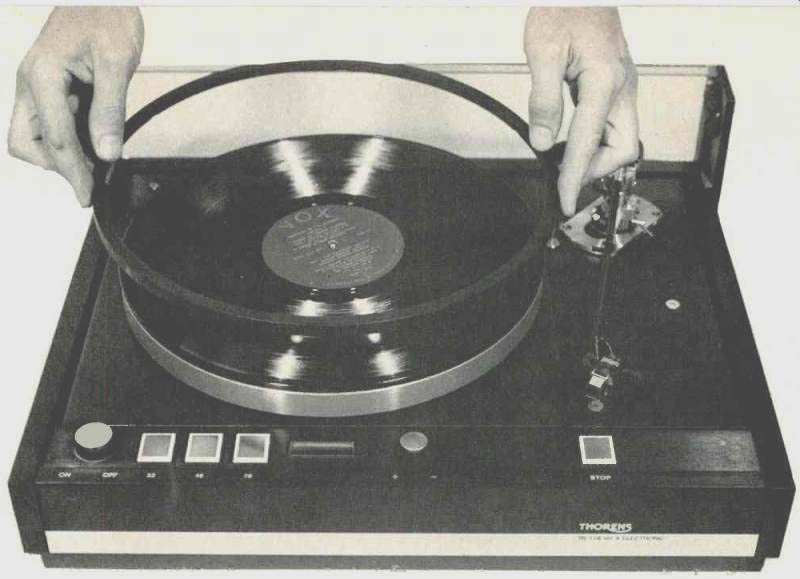
$15.00.
The existence of a product such as Warp Out is a sad but accurate commentary on the pressing quality of many records being sold to the public.
As many of you are all too painfully aware, records displaying various types of warpage are becoming the rule, rather than the exception. Seeking re course from a dealer merely becomes a process of exchanging your warped record for another in similar condition.
It would be interesting to know how much business is lost when people give up in sheer frustration their search for a good copy and forego purchasing a particular recording.
Of all the warps that records are subject to, that of "pinch" or "edge" warp is most common. While some of the best phono arms can cope to a very limited degree with some of the minor pinch warps encountered, in severe cases, even if an arm could track the warp, it would be putting out potentially destructive amounts of subsonic energy. If you don't believe me, take a look at the violent excursions of your woofer cone during playback of a warped record.
Warp Out is a black, zinc ring, fabricated so that it is slightly larger than a standard 12-in. record, but with a "lip" that is meant to be positioned on the periphery of the record. On the inner walls of the ring are a number of spring retaining clips to help secure the ring to the edge of the disc. In use, the idea is that when the ring is placed over the record, with the "lip" of the ring covering the edge of the record by approximately an eighth of an inch, the weight of the ring will compress any pinch warps that are present, thus making the record playable.
Does this device work? The answer has to be a qualified "yes." In my opinion, there is too much "play" in the ring, in that the inner diameter is slightly too large so that the spring clips don't perform enough clamping function. At least not on the records and turntables I used to test this unit.
Because of this play, the ring must be carefully positioned on the record so that the "lip" covers a uniform area and is not "lopsided." Depending on the weight, thickness and resiliency of the vinyl in the record, and, of course, the severity of the pinch warp, this Warp Out made many records play able, but unfortunately could not alleviate the warpage of some severely warped records.
Some turntable platters have beveled edges rather than straight sides, and the device won't work optimally with them. To cope with this, Warp Out sent a prototype Iso Mat, a quarter-inch thick plastic "sub-platter" with straight sides, which is placed on the turntable platter and then the turntable mat placed on top of the sub-platter. This gives additional vertical clearance. They do supply a clearance gauge. The Warp Out device would work better if it didn't have to contend with the "groove-guard" raised edge of the records. As it is, de pending on the clearance between the stylus cantilever and the underside of the phono cartridge body, some cartridges are difficult to position on the lead-in grooves without contacting the steel ring. This is on a manual turntable. On turntables with automatic arm function, I would urge caution when using this device the first few times to observe the stylus "set-down" point in relation to the ring.
Because "dish warp" on records is also extremely common, even when the Warp Out succeeds in eliminating pinch warp, the dish warp can still cause tracking problems. Ideally, the Warp Out should be used in conjunction with the turntable spindle weights such as those made by Keith Monks and Audio-Technica. These record weights flatten out the dish warps and make the task of the Warp Out easier. It seems ridiculous to em ploy such extremes in order to make a record playable, but such is the nature of pressings these days. In summation, Warp Out is not a panacea for all record warpage, but it certainly makes many records playable, instead of be coming Frisbees!
-Bert Whyte
(Source: Audio magazine, Sept. 1979)
Also see: Turntable Mats and Clamps: BY THE NUMBERS (Apr. 1988)
= = = =